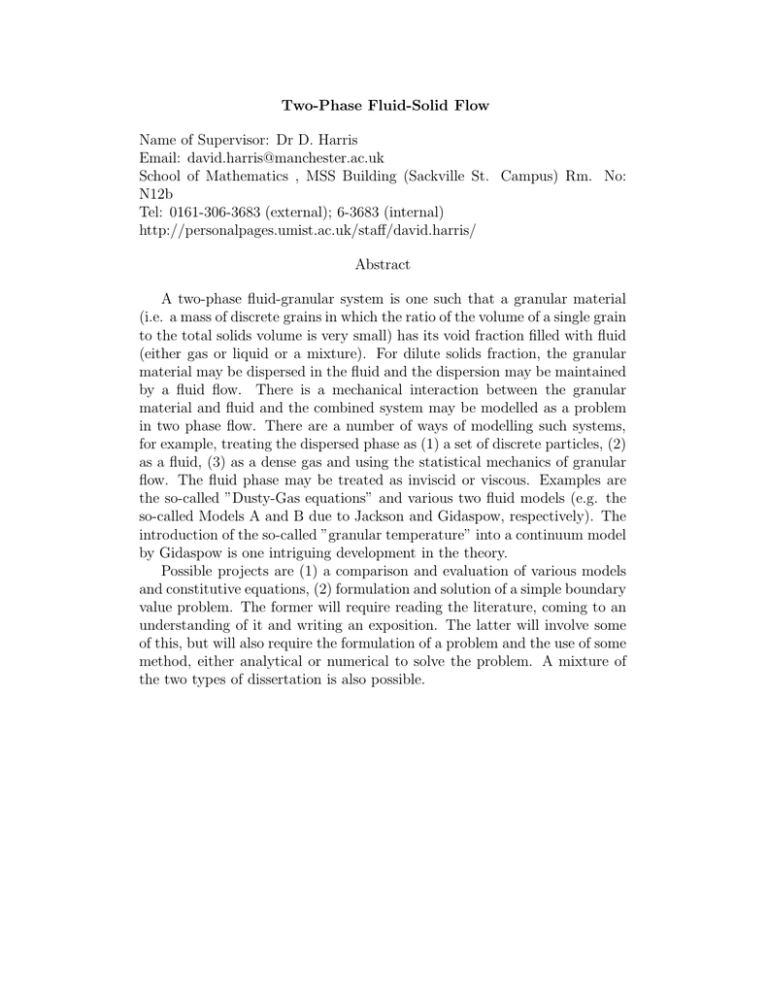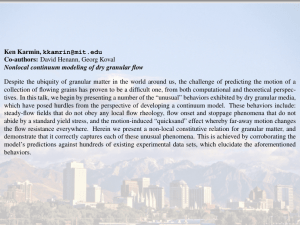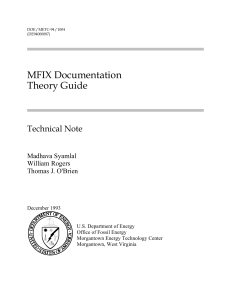Two-Phase Fluid-Solid Flow Name of Supervisor: Dr D. Harris Email
advertisement

Two-Phase Fluid-Solid Flow Name of Supervisor: Dr D. Harris Email: david.harris@manchester.ac.uk School of Mathematics , MSS Building (Sackville St. Campus) Rm. No: N12b Tel: 0161-306-3683 (external); 6-3683 (internal) http://personalpages.umist.ac.uk/staff/david.harris/ Abstract A two-phase fluid-granular system is one such that a granular material (i.e. a mass of discrete grains in which the ratio of the volume of a single grain to the total solids volume is very small) has its void fraction filled with fluid (either gas or liquid or a mixture). For dilute solids fraction, the granular material may be dispersed in the fluid and the dispersion may be maintained by a fluid flow. There is a mechanical interaction between the granular material and fluid and the combined system may be modelled as a problem in two phase flow. There are a number of ways of modelling such systems, for example, treating the dispersed phase as (1) a set of discrete particles, (2) as a fluid, (3) as a dense gas and using the statistical mechanics of granular flow. The fluid phase may be treated as inviscid or viscous. Examples are the so-called ”Dusty-Gas equations” and various two fluid models (e.g. the so-called Models A and B due to Jackson and Gidaspow, respectively). The introduction of the so-called ”granular temperature” into a continuum model by Gidaspow is one intriguing development in the theory. Possible projects are (1) a comparison and evaluation of various models and constitutive equations, (2) formulation and solution of a simple boundary value problem. The former will require reading the literature, coming to an understanding of it and writing an exposition. The latter will involve some of this, but will also require the formulation of a problem and the use of some method, either analytical or numerical to solve the problem. A mixture of the two types of dissertation is also possible.




